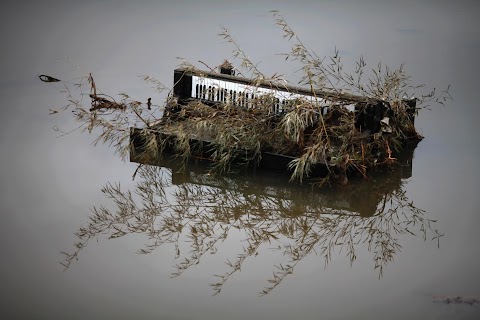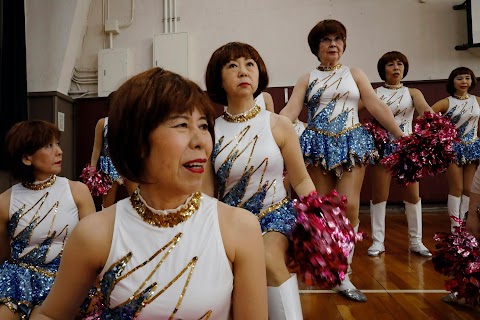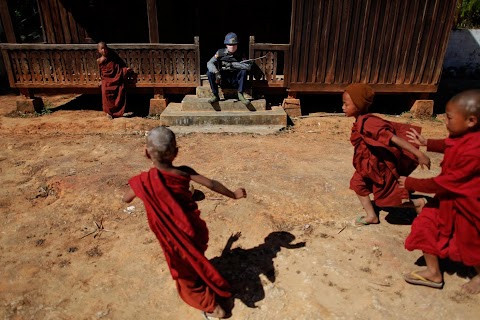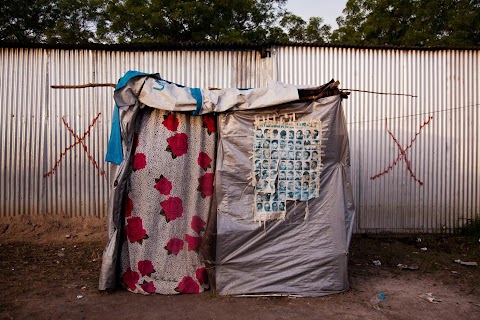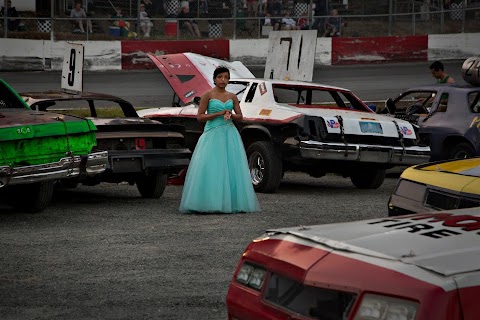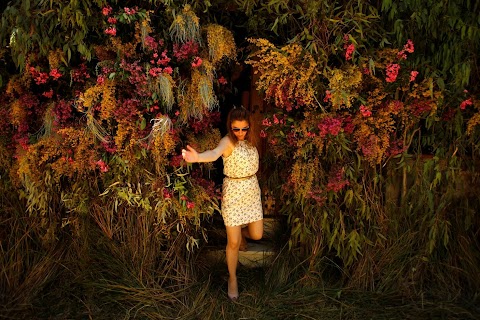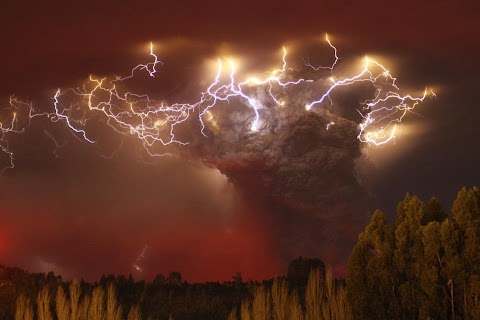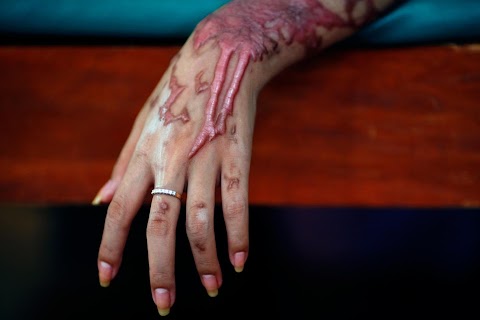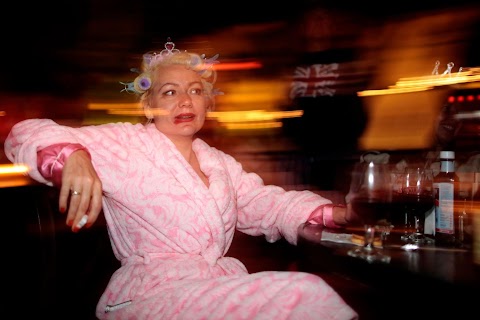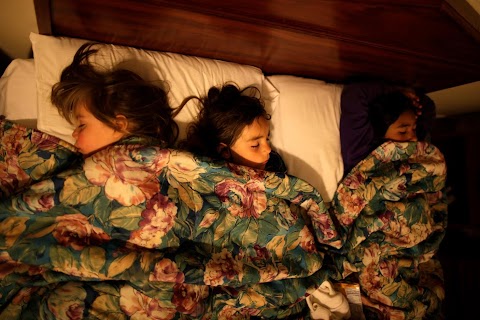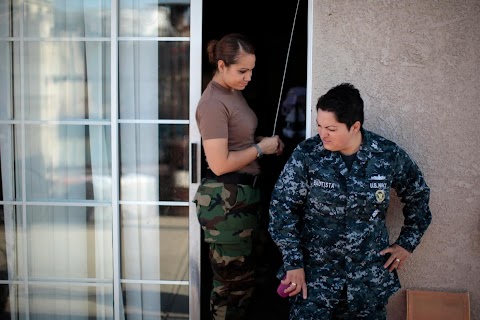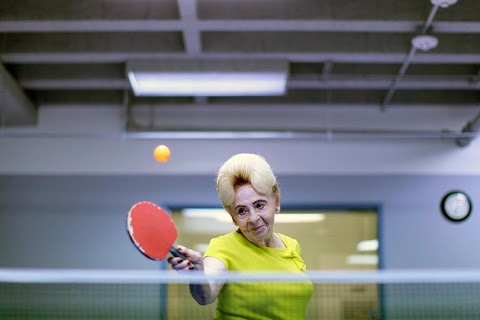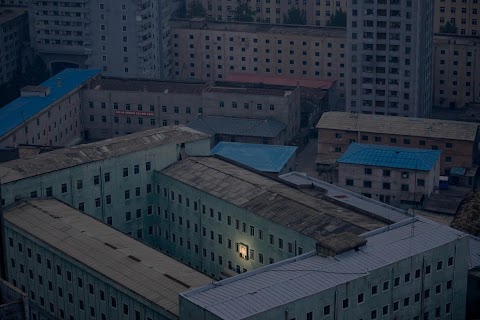
Famine in North Korea
 Damir Sagolj
Damir Sagolj
Isolated North Korea has appealed for food aid following years of mismanagement. In South Hwanghae province, which traditionally produces about a third of the country's total cereal supply, officials say a savage winter wiped out 65 percent of the barley, wheat and potato crops. Then summer floods and storms destroyed 80 percent of the maize harvest, according to the province's governing People's Committee.

A North Korean boy works in a field of a collective farm in the area damaged by summer floods and typhoons in South Hwanghae province.
Only 30 percent of a U.N. food aid target for North Korea has been met so far. The United States and South Korea, the North's two biggest donors before sanctions, have said they won't resume aid until they are satisfied the military-led communist regime will not divert the aid for its own uses and progress is made on disarmament talks.
Slideshow

Girls look through a window at a foreign delegation visiting a school in Haeju.

Han Yong Hui, the leader of the Soa-Ri collective farm walks through a village in the area hit by floods and typhoons.

A boy in a corn field in the Soksa-Ri collective farm.

Pak Su Dong, manager of the Soksa-Ri cooperative farm.

A woman prepares a meal in her house at the Soksa-Ri collective farm.

A meal of a woman who lost her house in summer floods and typhoons.

A child suffering from malnutrition rests in a hospital in Haeju.

Orphans suffering from waterborne diseases wait to be examined for possible signs of malnutrition.

A foreign health volunteer measures a child's arm for possible signs of malnutrition in a village.

Women stand by a simple meal of maize prepared for orphans.

Spoons and bowls are stacked after being washed in an orphanage kitchen.

Students and volunteers work to repair the water supply system in Haeju.

Students and volunteers work to repair the water supply system.

A child walks in front of a mural showing North Korea's founder Kim Il-sung in the capital.

North Korean military are seen below a tower practicing the national Juche (self-reliance) Ideology.
"In that moment, there was no wider context, no bigger picture"
I walked through the mirror to see what I’ve seen before – hunger and poverty, sad eyes of those in need and politics that promise no changes for the better any time soon.
I crossed into North Korea for the first time in my life to witness what should have been the distant past. I considered myself lucky; only my privileged status as an outsider prevented me from returning home the moment our plane landed and the first signs of grey reality were seen through the window of our plane.
This is not the place you want to be if you don’t have a guaranteed return ticket in your pocket.
I was on a trip with colleagues from Reuters Foundation’s Alertnet and two tough and experienced women from MSF (Medecins Sans Frontieres). Our visit was approved, organized and tightly controlled by government officials but we would be granted rare access to rural places that the media does not visit very often, if ever.
I knew it would be strictly controlled and that I would be, at moments, frustrated not to be able to photograph what I thought relevant and important. But I was determined to get the maximum out of it, no matter how little that could be. I know the eyes of malnourished children don’t lie. I know how to hear silent complaints of poor people whose empty looks say more that a thousand words.
I also know that from the dark side of the mirror our world is much clearer to see, to appreciate and to be ashamed of our own problems that we often exaggerate.
However, as we soon learned, the visit included rare access to collective farms, orphanages, hospitals, rural clinics, schools and nurseries where we could photograph farmers, children, orphans and at least have a glimpse into their daily life.
This was my first ever trip to North Korea. But, as a teenager I spent years in the former Soviet Union and former communist block where my father worked as a correspondent so certain things I saw in North Korea were not new to me; collective farms, tightly controlled movement, streets with no advertisements, shops with very little to offer, empty roads, propaganda music and posters on every corner. But, there was also some sort of order that makes this crisis very different from the chaos we see in countries like Afghanistan or Pakistan, Iraq or the Balkans.
I have also worked with government officials that follow every step I make on many occasions earlier in my career – in Saddam’s Iraq, in Iran or embedded with different armies on different occasions.
Only a few weeks ago, on a very different occasion with very different hosts, I had exclusive access, shot and wrote a story on ICTY, a UN war crimes tribunal for former Yugoslavia and its detention unit, as the first journalist ever to report from inside after it was established in 1993. That was controlled too and there were doors I could not peek behind, though it would have satisfied my curiosity and hunger for information. One can argue about the freedom of press but rules are rules in different places and if you don’t follow them, there will be no pictures and no witness report.
Is the limited access better that no access? Is seeing even a small part of a big story better than only listening to those with ultimate power?
In that respect, many places I have worked in are similar to hospitals we visited in Haeju where we saw just a part of it. There were not that many patients in the hospitals and when we asked why, officials would give us different reasons – one was lack of transportation. A duty doctor told us that one mother traveled 72 km (44 miles) on her bicycle to bring her sick child to the hospital.
Children had purple paste on their face – Delphine, an expert from MSF traveling with us explained that it is usual – it works as an antiseptic but also makes wounds and cuts dry faster. The condition of the child I photographed, his tiny body with almost no signs of life, was powerful enough even without that visual.
In the kitchen for orphans the only food prepared for the day we visited was maize and thin soup – cooks said they lacked vital ingredients for adequate nutrition.
Some of the children in hospitals had their mothers next to their beds; some had younger relatives accompanying them as their parents had to work in a field. In orphanages there were kids huddled together on the floor of a very basic clinic looking straight into my camera, their eyes burnt through the lens as experts from MSF measured their upper arms, a standard test for possible signs of malnutrition. Some of the children appeared in the danger zone when a plastic bracelet was used for measurement. This meant they could die without proper treatment.
Still, they just looked straight into us. There was no crying, just a “We Have Nothing to Envy” song as we left.
It was very emotional and we are only humans despite all the experiences we have under our belts. Again, I escaped behind the camera to make it all look like it’s just on a screen, some distant place with only shapes and colors. I played with angles and lenses and all these things but I knew it would not work. It would just make it worse if I focused on those eyes cutting everything else in the world out of my frame. What was important I captured straight into my photos and it burned into my memory to stay there forever.
In that moment, there was no wider context, no bigger picture – just the eyes of a child who might die soon because of the lack of food; unacceptable and a sad reality.
I’m not a big fan of sanctions. Yes, it is high politics and it might have a long-term positive effect, all these “Milosevics and Saddams” would be gone, but what about the collateral damage when it lasts too long? What about all these children that died or are still dying from illnesses that are easily treated in the rest of the world? What about all the professors, now only pale shades of themselves, who search trash bins and containers for a piece of bread to survive? What price is not too high?
The hardest aspect of this assignment, like many times in my career, was to see the children suffering knowing their status might not change before it’s too late. It is always difficult to leave a room after photographing a helpless child, weak and sick, whose life might be very short even by North Korean standards – according to the UN, North Koreans live on average 11 years less than South Koreans due mainly to malnutrition.
On the professional side, I have never seen so many pictures – through the window of our bus or just walking the streets – without being able capture them as I had to follow the strict instructions from the official. But, what I managed to photograph – people struggling with food and health in the 21st century just across the border from a country that has plenty – made this trip very unique and worth taking.
Knowing the nature of the regime in North Korea and how difficult it is for a reporter to work there, what we saw in the provinces was more that expected on a rare trip outside the routine coverage of military parades and mass games foreign journalist usually see in the capital.
We stayed in North Korea for a week – three days in the provinces and four days in Pyongyang meeting officials and different NGOs working there. We visited South Hwaghae province and briefly crossed the provincial border to visit an orphanage in North Hwanghae. I saw golden fields and people working in them with primitive tools but only one tractor on the duration of our trip.
I tried to lock eyes with people we met – it didn’t work. They rushed past our alien group back into their grey struggle for at least a decent life. Officials traveling with us insisted on the pride of Korean people as the main reason for them turning their faces from our cameras.
The children are different; more open and beautiful in their innocence, unaware of what is ahead. We are the first, hopefully not the last, foreigners they ever see.
Back at the hotel in Pyongyang, an impressive building from the mid-eighties when the eastern block still guaranteed not total isolation – I looked at my pictures. They were many and they were strong and I almost didn’t need to edit them. But, it was all too little to make me feel really good about my reporter’s Pyrrhic victory of scoring a rare exclusive.
There was something beyond that and it had to do with understanding the pain of others, especially those from the other side of the mirror.

An industrial zone rises behind a residential area in the North Korean capital at dawn.
